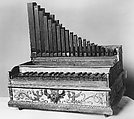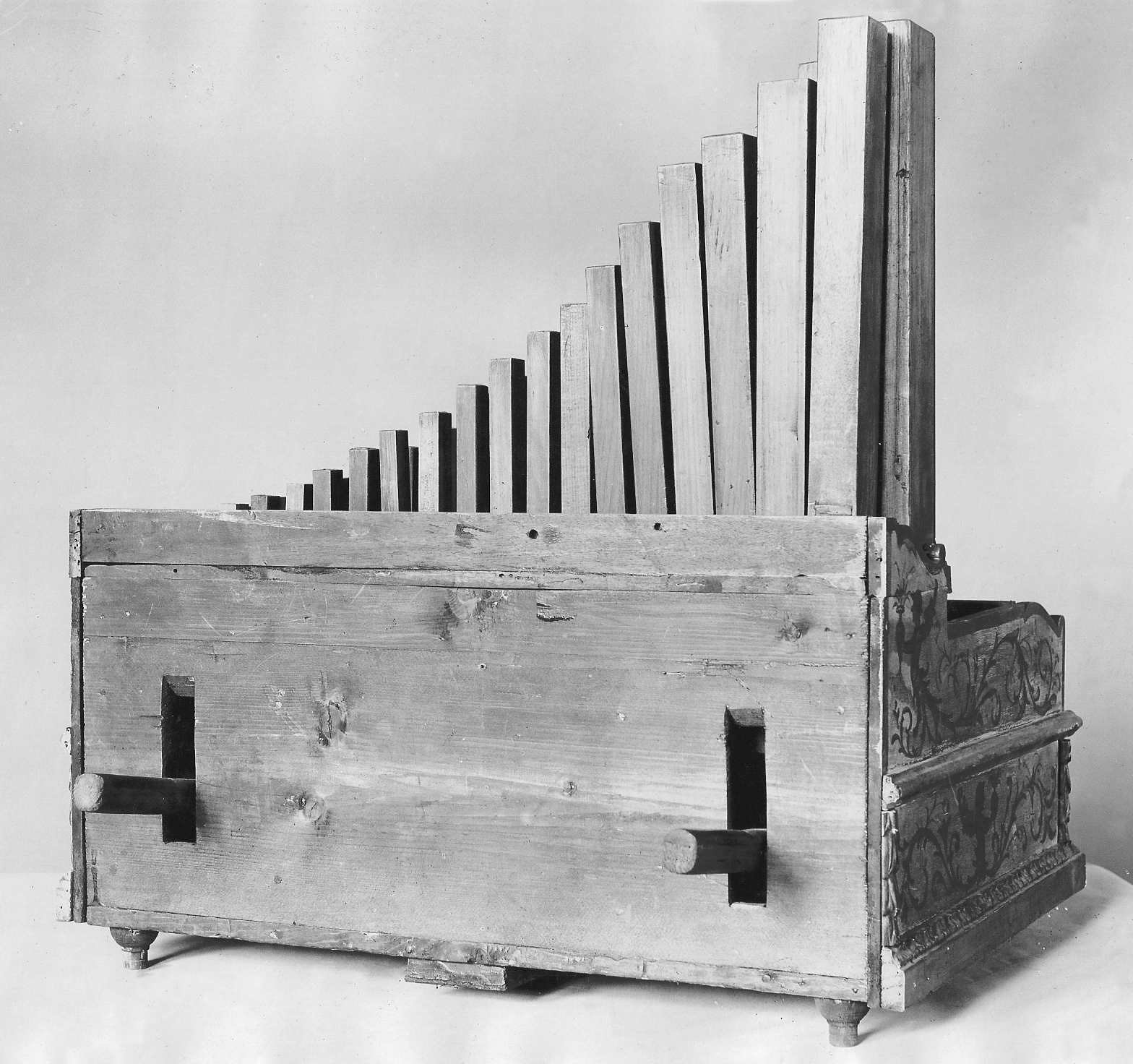Portative Organ
Probably by Leopoldo Franciolini Italian
Not on view
The portative organ is the smallest member of the organ family and generally has a single rank of flue pipes. As its name suggests, it is intended to be easily moved.
This portative organ is a product of the Leopoldo Franciolini workshop in Florence, Italy during the last part of the 19th century. Franciolini was a renowned musical instrument dealer who misrepresented many of his items as much older than they actually were. He was known for selling some very nice items, some which were partially authentic, and some which were complete fabrications. This organ does contain some older elements including possibly the keyboard, but was mostly a product of the late nineteenth century.
Technical description: Rectangular mahogany base holding keyboard and mechanism, with 1 rank of pipes mounted in 2 rows on top behind keyboard; base painted blue with gilt designs of flowers and angels, with gilt moldings, resting on 4 feet; 2-piece hinged cover folds over keyboard; a grotesque carved head mounted on front of base; 2 feeder bellows operated by 2 handles extending through back of base, and connected to reservoir between the feeders by conduits on bottom of base; reservoir compressed by coil spring; a vertical conduit connects reservoir to windchest, on which are 38 open wood pipes, most with beveled caps and showing some pitch letters; windchest contains rocker valves opened by sticker pins above key tails; keyboard has arcaded, double scored boxwood naturals and ebony accidentals, with pitch letters written on naturals; the keyboard is taken from a virginal that had a C/E-f3 compass, and the top key is inscribed (see below); the keyframe has been altered, and the keys are now returned by wire springs attached to balance rail and hooked around a tack on the right side of each key; present compass apparently e-f3.
Due to rights restrictions, this image cannot be enlarged, viewed at full screen, or downloaded.
This artwork is meant to be viewed from right to left. Scroll left to view more.



